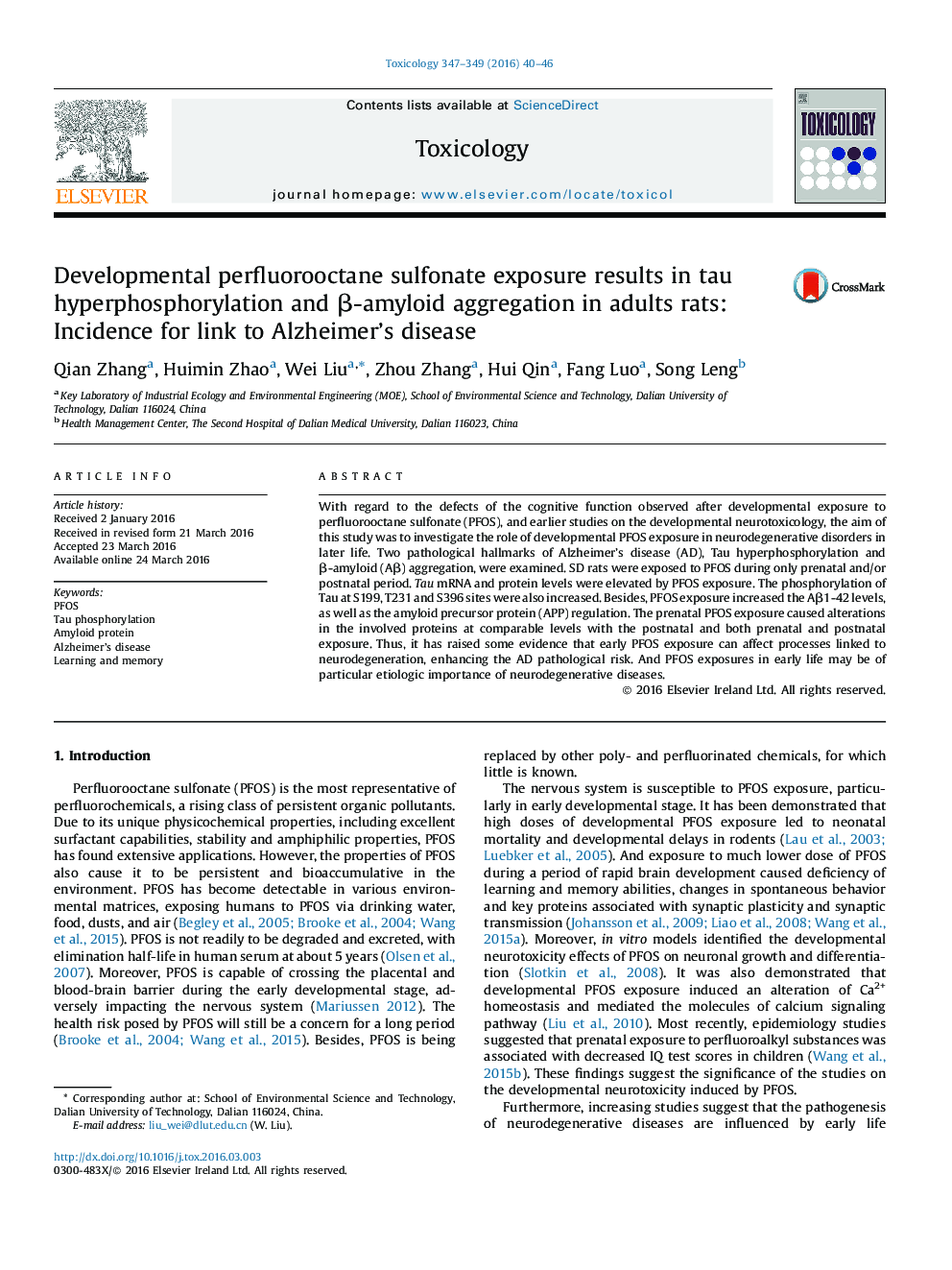| Article ID | Journal | Published Year | Pages | File Type |
|---|---|---|---|---|
| 2595462 | Toxicology | 2016 | 7 Pages |
•PFOS exposure increased Tau mRNA and protein levels, as well as Tau phosphorylation.•PFOS exposure increased the Aβ1-42 level and acivated the amyloid precursor protein regulation.•The prenatal PFOS exposure posed a high developmental neurotoxicity risk.•Early PFOS exposure affected processes linked to neurodegeneration, enhancing the AD risk.
With regard to the defects of the cognitive function observed after developmental exposure to perfluorooctane sulfonate (PFOS), and earlier studies on the developmental neurotoxicology, the aim of this study was to investigate the role of developmental PFOS exposure in neurodegenerative disorders in later life. Two pathological hallmarks of Alzheimer’s disease (AD), Tau hyperphosphorylation and β-amyloid (Aβ) aggregation, were examined. SD rats were exposed to PFOS during only prenatal and/or postnatal period. Tau mRNA and protein levels were elevated by PFOS exposure. The phosphorylation of Tau at S199, T231 and S396 sites were also increased. Besides, PFOS exposure increased the Aβ1-42 levels, as well as the amyloid precursor protein (APP) regulation. The prenatal PFOS exposure caused alterations in the involved proteins at comparable levels with the postnatal and both prenatal and postnatal exposure. Thus, it has raised some evidence that early PFOS exposure can affect processes linked to neurodegeneration, enhancing the AD pathological risk. And PFOS exposures in early life may be of particular etiologic importance of neurodegenerative diseases.
Graphical abstractFigure optionsDownload full-size imageDownload as PowerPoint slide
